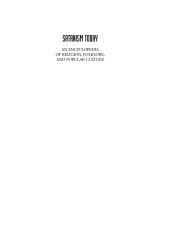I. VAMA MARGA Foundations Of The Left-Hand Path - staticfly.net
I. VAMA MARGA Foundations Of The Left-Hand Path - staticfly.net
I. VAMA MARGA Foundations Of The Left-Hand Path - staticfly.net
Create successful ePaper yourself
Turn your PDF publications into a flip-book with our unique Google optimized e-Paper software.
exerts in each individual magician's consciousness that is the source of<br />
potential energy.<br />
To fully comprehend the meaning of left-hand path taboo violation in<br />
India, something of the importance of the concept of pollution and purity in<br />
Hinduism must be discussed. Innumerable actions are deemed to pollute the<br />
orthodox Hindu, who is restricted by strict religious law from eating,<br />
90<br />
marrying, or even socializing with members of other castes – just a few of the<br />
many deeds which are said to contaminate one's purity. <strong>The</strong> intricacy and<br />
arbitrariness of these laws beggars description, keeping every aspect of the<br />
orthodox Hindu's life regulated, especially for the high ranking Brahmins at<br />
the top of the hierarchy.<br />
<strong>The</strong> left-hand path initiate deliberately performs such polluting acts,<br />
inverting them as consecrated rituals, thus transcending divine laws. He or<br />
she who breaks the restrictions laid down by the gods is effectively<br />
transformed into a god-like being. Even in the social chaos of our own Kali<br />
Yugic time and culture, which lacks the strict concept of spiritual pollution<br />
known on the sub-continent, there are actions beyond the pale that<br />
possess the same kind of liberating power for the contemporary lefthand<br />
path initiate.<br />
91<br />
92<br />
93<br />
III.<br />
IN THE TEMPLE OF<br />
THE NINE GATES<br />
Ecstatic Rites <strong>Of</strong> <strong>The</strong> <strong>Left</strong>-<strong>Hand</strong> <strong>Path</strong><br />
<strong>Left</strong>-handed rituals derived their force from the deliberate reversal of the<br />
established morality. <strong>The</strong> explicit aim of the Five M's ritual is to raise the<br />
worshipper above praise, censure, shame, pride of family, and caste as a step<br />
toward liberation from the bonds which keep one from the supreme bliss; at<br />
the same time the ritual testifies that the prevailing morality forbade such<br />
things as wine, meat-eating, and sexual intercourse outside of wedlock.<br />
Geoffrey Parinder, World Religions<br />
<strong>The</strong> Five Secret Things<br />
<strong>The</strong> Indian left-hand path celebrates many sacred rites of taboo violation, the<br />
severity of which differ from sect to sect and region to region. <strong>The</strong> bestknown<br />
is probably the Panchamakara, or the five things" also known as<br />
Panchatattva the five tattvas. Once strictly guarded from non-initiates, the<br />
act of erotic theurgy sometimes called "the secret rite" has long since ceased<br />
to be secret. <strong>The</strong> Panchamakara is also commonly known as the rite of the<br />
"Five M's", as it involves the ritual consumption of five elements taboo to<br />
ordinary Hindus; the names of these elements all begin with the letter M .<br />
Although the secret rite may now seem rather tame to the modern<br />
Western reader, hardly deserving of its once secret status, it was<br />
extraordinarily transgressive for its practitioners, living as they did in a<br />
society surrounded on every side by the most scrupulously observed taboos.<br />
An in-depth analysis of the many layers of the meaning hidden in this<br />
notorious but often superficially explained ritual will allow the magician to<br />
access something of the complexity of the left-hand path's most well-known<br />
sacred act, and to view it from an initiated perspective.<br />
<strong>The</strong>re is a veiled mantric symbolism to the sound of M and the<br />
number five involved with the names of these forbidden elements, the first<br />
four of which are matsya (fish) mamsha (meat) madya (wine) and mudra<br />
(parched cereal, alternately beans). <strong>The</strong> fifth element is maithuna (ritual<br />
coitus). <strong>The</strong>se edible elements represent Water, Air, Earth, Fire, united by the
















